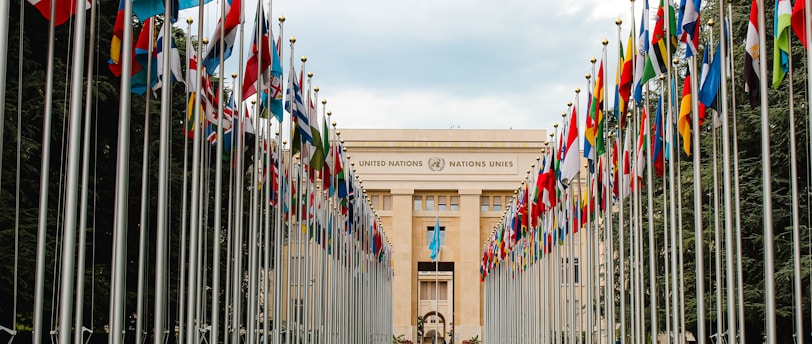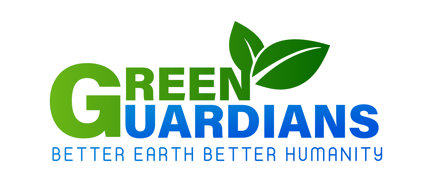The United Nations Sustainable Development Goals (SDGs): A Guide to Achieving an Eco-Friendly World
The United Nations Sustainable Development Goals (SDGs) constitute a world action plan designed to fight poverty, inequality, and climate change while ensuring peace, justice, and prosperity for everyone. The 17 SDGs were adopted by all 193 countries that constitute the UN as a part of the 2030 Agenda for Sustainable Development which started off back in September 2015.
SECTION: GLOBAL AWARENESS INITIATIVES TO PROTECT THE ENVIRONMENT
1/1/20253 min read


The SDGs build on the Millennium Development Goals (MDGs) (2000 – 2015), but additionally cover climate change, economic growth, and conservation of biodiversity. Universal in nature, the SDGs apply to all countries irrespective of their level of development and focus on global partnership and shared accountability.
Goals and Coverage
In target social, economic, and environmental spheres, the 17 SDGs are intended to be balanced and sustainable, hence, they are interconnected.
1. Reducing Poverty And Hunger (SDGs 1 & 2)
SDG 1: Provide economic employment, social protection, and resources to opportunities to eliminate poverty by all means.
SDG 2: To end hunger and malnutrition, sustainable agriculture and proper nutrition programs must be put into place to reach food security.
2. Expanding Health and Learning Systems (SDGs 3 & 4)
SDG 3: Ensure universal coverage of health services, decrease maternal and childhood mortality and combat communicable diseases.
Target 4. Educational Inclusivity: The aim is to provide equitable and quality education for everyone while addressing gender imbalances.
3. Gender Inclusion and Social Inclusion (SDGs 5, 10, 16)
SDG 5: Achievement of gender equality through the removal of discrimination and the uplifting of women and girls.
SDG 10: Effort to lessen within and between countries the disparities of income and wealth.
SDG 16: Foster peaceful and inclusive societies for sustainable development, provides access to justice, and builds accountable and inclusive institutions at all levels.
4. Economic Growth in Relation to Sustainability and Development of Infrastructure (SDGs 8, 9, 11)
SDG 8: Achieve sustained economic growth and full and productive employment with decent work for all.
SDG 9: Build resilient infrastructure, promote inclusive and sustainable industrialization and foster innovation.
SDG 11: Make cities and human settlements inclusive, safe, resilient, and sustainable by reducing pollution as well as improving housing and ensuring the availability of green spaces.
5. Climate Action and Environmental Sustainability (SDGs 6, 7, 12, 13, 14, 15)
SDG 6: Ensure availability and sustainable management of water and sanitation for all.
SDG 7: Ensure universal access to affordable, reliable, and modern energy services and increase the use of renewables.
SDG 12: Ensure sustainable consumption and production patterns by minimizing waste and maximizing recycling.
SDG 13: Combat climate change and its impacts by taking urgent and coordinated action at the international, national, and local levels.
SDG 14: Conserve and sustainably use the oceans, seas and marine resources by taking measures to reduce marine pollution and promote sustainable fisheries.
SDG 15: Protect, restore, and promote sustainable management of forests, combat desertification, halt and reverse land degradation, and halt biodiversity loss.
6. Global Partnerships for Sustainable Development (SDG 17)
SDG 17: Global Partnerships for Sustainable Development International initiatives focus on fostering sustainable bilateral and multilateral relationships through the expansion of financial, technological, and information resources.
Implementation and Progress
1. National Adaptation and Policy Integration - A country shifts its policies and action steps in accordance with adoption of SDGs. - Sample: European Green Deal is one of the steps taken towards carbon neutral economy and sustainability which greatly supports SDGs.
2. Measurable Progress on Indicators - Within the context of monitoring systems, the progress for SDGs is monitored by the UN using 232 global metrics. These metrics include poverty, literacy, and emissions. - The SDG Progress Reports attempt to portray the progress made and reveal gaps at the same time.
3. Role of Private Sector and Civil Society - Corporations integrate sustainability into their business models (e.g. usage of Green technologies, trade with developing countries). - Nongovernmental organizations and activists have an important agenda on popularizing issues and bringing governments to account for inaction.
Achievements & Impact
In the commencement of 2015, progress has been made under SDGs such as:
Reduction in extreme poverty- The number of individuals living below the international poverty line has decreased.
Increased adoption of renewable energy- Adoption of solar and wind energy has increased across the world.
International agreements on climate change- The SDGs support the Paris Agreement on climate change.
Expansion of education- Greater school attendance, particularly among female children.
Challenges and Future Goals
Although there is some progress, deeper issues persist:
1. Change of climate and pollution of the environment.
Increased carbon emission and loss in biodiversity is hurting the SDGs 13, 14 and 15.
Efforts need to be made to stop deforestation, pollution, and fossil fuel usage.
2. Inequity and Economic Differences
A number of developing countries are still dealing with inequity in income, as well as job opportunities.
Evolving or developing economies have witnessed an upsurging rate of poverty due to the setbacks brought about by the COVID-19 pandemic.
3. Indolent Implementation of Policies
A number of countries do not have sufficient funds or political backing to complete implement SDGs.
For sustainable development, stronger worldwide cooperation and financial support is needed.
The Future of the SDGs
Given that time flies implacably, countries should now work towards:
Crusade against policies on fossil fuels and over policy climate action.
Include and improve social services/cash transfers in order to fill the gap in poverty and inequality.
Foster international support in raising and aiding expenses, and transferring tehnology to developing countries.
The goals are intended to be achieved by 2030 and as established, they require extra effort and international collaboration to accomplish them. Social, economic, and environmental issues certainly are interconnected, and their consideration within one programmatic framework undoubtedly brings optimization of resource use, but much more can be achieved.
Would you like additional information on these SDGs and implementation details?
